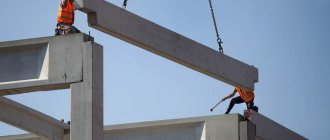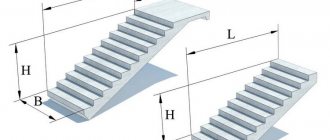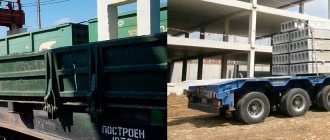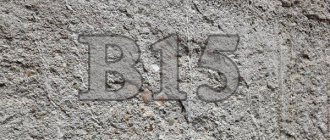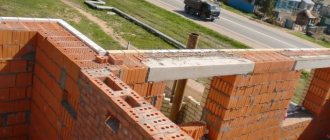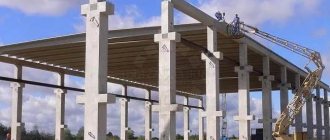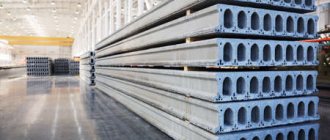It is difficult to imagine the modern construction of multi-storey buildings without the use of reinforced concrete elements in the form of staircases and flights. From the point of view of comfort, convenience and, most importantly, safety, all buildings with a height of more than one floor should be equipped with flights of stairs. At the same time, the most practical wear-resistant and durable products are reinforced concrete products, which have a long service life. In this regard, reinforced concrete, which meets all the requirements for reliability and fire safety of buildings, has earned high popularity and is used for the construction of a wide range of industrial, civil and military facilities. It is worth noting that landings and flights are also in demand in suburban construction. Affordable cost and high performance characteristics make it possible to effectively use standard structures in the construction of houses and cottages, allowing the construction of modern, comfortable and original real estate.
Design standards
When designing, in addition to the load-bearing loads on the supporting structures, it is very important to correctly calculate the optimal dimensions of the staircase steps, which affect the comfortable and safe use of the structure. These step parameters include:
These step parameters include:
- flight width (length of steps);
- tread width;
- angle of inclination of steps;
- height of steps.
.The dimensions of the steps must be calculated in accordance with specially developed GOST standards:
- 8717.1-84 — Reinforced concrete and concrete steps. Design and dimensions;
- 23120-78 – Flight stairs, platforms and steel fences.
The main parameters of the above GOSTs:
- The minimum step length is 80 cm throughout the entire flight of stairs.
- The height of the step is 160-180 mm, and should not differ throughout its entire length by more than 5 mm.
- The width of the tread is at least 250 mm, the comfortable width is determined so that an adult’s foot fits completely on the surface.
- The overhang of the tread behind the riser should be within 20-40 mm.
People receive a large number of injuries as a result of using ladders that deviate from the specified parameters.
Step step
The step of an adult when walking calmly is 600-640 mm. When climbing stairs, the step length is reduced, and it is 430-470 mm, this is the sum of the height and width of the steps of the stairs.
If this value is below that indicated, difficulties will arise when descending the stairs. When the value increases, there is a possibility that a person will lose his usual step and thereby experience discomfort.
The height of the stairs in your home
The height of the step directly depends on the angle of inclination of the stairs and the number of steps in the flight of stairs.
The size of staircase steps in a private house is considered acceptable in the range from 15 to 22 cm, but the optimal step height is from 16 to 18 cm.
Step length
The length of the step corresponds to the width of the flight of stairs, and to determine it you need to know for what purpose the staircase will be used and in what room it is located.
These parameters apply equally to both marching staircases and spiral staircases.
As we already wrote above, the minimum width of the march is 80 cm. With such a width, one person will be able to move comfortably.
In the event that it is intended to carry large objects, as well as for the free oncoming movement of two people, the length of the steps should be at least 125-150 cm.
An important criterion in choosing the length of a step is the area of the room in which the staircase is located.
For extension, folding and attic stairs, the standard size of steps in length varies in aisles from 40 to 70 cm.
Step width
The next important parameter is the width of the step. This indicator, like the height of the step, depends on the angle of inclination of the stairs and the number of steps in the flight.
A comfortable size is considered to be 25-30 cm. With this value, the tread can completely accommodate the foot of an adult. It is allowed to reduce this indicator on technical stairs with irregular use.
In case of cramped staircase placement conditions, it is possible to increase the size of the tread due to an additional overhang above the riser; the dimensions of this overhang should be no more than 40 mm.
For winder steps used in turning and spiral staircases, there are also acceptable step widths:
- The minimum width of the step in the narrow part should not be less than 10 cm.
- The wide part is no more than 40 cm.
- The central part along the line of movement is at least 20 cm.
On spiral staircases, the height of the steps is slightly increased, due to the fact that the angle of climb on such stairs is higher. On turning ones, the standard height of stair steps is used.
Briefly about the main thing
A flight of stairs is one or more sets of steps combined into a group. According to building codes, it must be resistant to weight loads, fire, not conduct electricity, and allow free and safe movement between floors. It includes the following elements:
- Step.
- Riser.
- Stringer/string.
- Supports.
- Handrails.
- Balusters.
- Distance sleeve.
According to the type of construction, stairs can have different configurations, the number of flights, and can also be not only marching, but also spiral. When designing, the dimensions and parameters of its main elements are calculated - the height of the staircase, the number of steps, the height of the riser, the width of the step, the width of the flight, the planned length of the staircase, the ceiling opening, the length of the bowstring or stringer. The manufacture of components and installation of stairs must be carried out by specialists strictly in accordance with building codes and technology.
Free staircases
| product name | Volume, m3) | Weight (t) | Price including VAT (RUB) |
| ML 30-60-10 | 0,71 | 1,8 | 11550 |
| ML 30-60-13 | 0,91 | 2,3 | 15700 |
| ML 33-60-10 | 0,76 | 1,9 | 13100 |
| ML 33-60-13 | 0,98 | 2,5 | 15800 |
| ML 36-60-13 | 1,06 | 2,7 | |
| For ordering, price clarification and delivery questions, call: | +7 +7 | Order |
Precast concrete staircases are made by molding in metal molds. The production of marches is provided in the downward position. The calculated load without taking into account its own weight for LM30-60-10 is 520 kg per m2. Flights of stairs are formed in cassettes on the side. It is possible to manufacture products according to customer drawings.
Determining the required geometric dimensions
In order to correctly perform calculations, it is necessary to take into account certain geometric measurements. According to experts, three parameters are mainly important:
- height is the distance from the floor surface on the first floor to the floor surface on the second. To correctly determine the distance from the step to the ceiling, you need to take the height of the tallest person in the family and add 100 mm;
- the length is equal to the length of the march or the sum of all marches. At the same time, a staircase is added between them;
- width - the distance of the structure from the wall or the gap between two handrails.
In the diagram you can see the relationship between the angle of inclination and the steps
It is necessary to take into account the width of the marching structure:
- 1÷1.2 meters – will ensure comfortable movement;
- 1.5 meters – high level of comfort;
- 0.8÷1 meter can be used for a ladder installed against a wall;
- less than 0.8 meters – for auxiliary models.
Example of calculated data
The minimum permissible width for stairs with winder steps is 1.1 meters. The width cannot be less than 1.1 meters for a screw structure. The comfort zone starts from 1.4 meters.
The video below shows a simple way to calculate stairs:
Stair inclination angle (steepness)
The angle of inclination determines the ease of use of the stairs. A staircase that is too steep allows you to save useful space, but a flat one makes moving along it more comfortable. The type of staircase depending on the steepness is shown in the photo below. Here you can clearly see at what angle the staircase in a living room should be. The most comfortable option for movement is in the green one.
The diagram shows different angles of inclination
For your information! A staircase can be placed in a residential area only if the premises on the first and second floors are heated. If not, then the installation is carried out in a non-residential premises.
An example of calculating the length, calculating the height and width of staircase steps in a private house
One of the most important points is the correct calculation of the steps of the stairs. The dimensions should be such that it is convenient to move along the stairs. It is necessary to determine exactly what the height and width of the staircase steps should be.
The height of the step should not be too small so as not to disrupt the step. The optimal indicator varies between 150÷180 mm. The width of the tread should be such that the sole fits completely on it. The optimal option is from 250 to 320 mm. Often the tread is made with an overhang over the bottom step.
To find out the optimal ratio of width and height, you can use the following relationship:
2h + b = 600÷640, where
- h – step height;
- b – tread width;
- 600÷640 is the approximate length of a human step, or rather its average value.
Recommendations for step sizes
The disadvantage of the formula is that it does not take into account that the step width can be smaller or larger, and also does not take into account the slope of the march.
Step standards
To calculate the steps of the stairs to the second floor more accurately, use the special online calculator below, which uses other formulas.
Method of trigonometric calculation of step sizes
To determine the distance between the edges of the steps, the following formula is used:
G / sin 63° = (0.5 × L) / sin (27° + α),
Segment G is the hypotenuse in a triangle in which the legs are the width and height of the step.
From here:
- h = G × sin α= G × cos (90 – α);
- b = G × cos α= G × sin (90 – α).
But to find out the dimensions, it’s easier to use an online calculation of staircase steps.
Calculator for calculating the optimal sizes of steps of a flight of stairs
A simple way to calculate steps is presented in the video below:
Determining the optimal angle of inclination of the stairs
Almost all stairs have a slope of 45 degrees. The width of the step usually corresponds to foot size 45, but it should not be less than 30 cm.
Let's consider the main angles of inclination:
- for household stairs, the angle varies from 30 to 45 degrees;
- for flat structures and ramps – 30;
- for attached and steep options – 45÷75;
- utility ladders – more than 75.
There is a certain relationship between the steepness of the staircase and the location of its installation. The following relationship is used for the calculation:
D = H / tan α, where
- D – length of the horizontal projection of the stairs;
- H – height of the flight of stairs;
- α – slope angle.
Manufacturing of high-quality spans according to GOST
The use of high-quality material in construction guarantees strength, resistance to any type of load and reliability of the staircase structure. First of all, this applies to reinforced concrete products. And it is they who are subject to GOST requirements.
In the manufacture of stair sections, heavy concrete (GOST 26633) and lightweight concrete (GOST 25820) with a density of 1600 to 2000 kilograms per cubic meter are used.
Stepped spans are installed using reinforcement, for the manufacture of which the following are used:
- rod hot-rolled reinforcing steel class AI-AIII (GOST 5781);
- rod thermomechanical strengthened reinforcing steel class At-IIIC, IVC (GOST 10884);
- wire of class BP-I (GOST 6727).
Also, all flights of stairs and platforms that are used for the installation of stairs must withstand certain loads in accordance with GOST during operation. For residential structures, such a load should be 360 kgf/sq.m., and for industrial, public and industrial buildings 480 kgf/sq.m. is allowed .
Stair treads are also provided for by GOST. 1 LN are intended for laying on the ordinary and lower steps of manufactured flights. 2 LN are intended for installation on the upper steps of such flights, as well as on the upper and lower landings.
General requirements for stair elements
Regulatory documents also describe the parameters of staircase elements - steps, railings, lighting. Based on SNiP, design an object convenient for moving people up and down the flights. Therefore, when drawing up a design for internal staircases for multi-storey buildings with high traffic volumes, their compliance is highly desirable. If there are GOST requirements for the construction project, regulatory documents are compared. In view of the fact that staircase elements must be comfortable to use and safe, their dimensions are as follows:
Degrees.
The height within one flight of stairs is no less than 12 cm and no more than 20 cm. However, the difference in the size of the steps should not exceed 5 mm, otherwise an uneven slope will be observed, which is unsafe when descending. The width depends on the purpose of the building under construction. If you are designing stairs for a residential multi-storey building, then the width of the steps should be from 25 cm (we are talking about the main interfloor objects). In public buildings, this parameter is reduced to 20 cm. If the steps are 0.26 meters wide, then its protrusion should be no more than 30 mm (less is possible).
Wedge-shaped steps.
A tread of 10 cm on the inner border of the useful width of the wedge-shaped (winder) degrees. The size of the tread increases to 26 cm (not less) for marching stairs.
Rice. 3. Schemes of flights of stairs with steps of various types
Staircase landings.
The dimensions of the platforms are calculated based on the useful width of the adjacent flights. They should be no less. The platform should have a length equal to 2 times the average step of an adult. Physical size - 1.31-1.42 meters. If the landing is located in front of the main entrance, then its length should be at least a meter. When calculating the area of an element, the type of entrance door, the opening side of the doors and the dimensions of the doorway are important, especially when using swing doors. The landing towards which the sash opens is made wider and longer, otherwise it will be inconvenient and unsafe for an adult to manipulate it.
Fencing.
According to the requirements, when designing stairs between floors, it is necessary to provide enclosing structures with a height of 90 cm. The spacing between railing balusters is no more than 15 cm. In multi-apartment residential buildings, where the main structure will be used by small children, the height of the fence should be from 1.2 to 1.5 m, and the pitch between balusters is no more than 10 cm. There are also requirements for entrance porch structures. If they are designed for 3 or more steps, then the height of the fence should be at least 800 mm.
Rice. 4. Step between balusters
Rice. 5. Calculation of the height of the fence
The lighting requirements for the main structures must also be observed. SNiP require high-quality illumination of steps, especially the first and last elements of the flight. If there are window openings (according to GOST, if they are located at the height of an adult), they must be fenced.
The video below describes in more detail the requirements for stair elements. It is explained why exactly these dimensions and values for the railings were obtained.
Installation features
Installation of a staircase structure involves creating all the elements and connecting them into a single structure in accordance with the drawing and building codes. The installation technology includes the following steps:
- Creating a stringer or bowstring.
- Installing the support in place.
- Installation of support elements for steps.
- Assembly of steps and risers.
- Fastening fences - handrails, balusters, posts.
- Decorating, painting.
- Checking fastenings, commissioning.
Important! The volume of a flight of stairs is determined not only by the usable width, but also by the dimensions of the transition areas. For ease of use, their minimum length should be equal to the average step - 0.6-0.7 m, and when arranging a turn - the smallest usable area is 1 m².
What should be the width of the steps for comfortable movement?
The functional width of a flight of stairs is determined by the capacity of the staircase, taking into account the fact that 0.6–0.7 m is enough for one person to pass through. The width of internal flights of stairs should be at least 0.9–1.0 m, and in luxury houses - 1.25-1.5 m.
In spiral staircases, the distance from the central post must be at least 1.1 m. At a distance of 1.5 m, the width of the step must be at least 100 mm.
To determine the size of the staircase, you need to determine its place on the plan and the height of the floor, select the staircase layout and the size of the steps. As a rule, the angle of rise of a flight of stairs is from 30 to 45 degrees.
Practice shows that a staircase will be comfortable and safe if twice the height of the riser, added to the width of the step (tread), is equal to the average human step. The length of a person’s step on a plane is approximately 62–64 cm, a comfortable leg lift is 30–32 cm. Based on this, the tread is determined as follows: 2 A + B = 64 or A + B = 47 cm, where A is the height of the step, B - tread width.
The most convenient for climbing stairs are those with a step height from 140 to 170 mm and a tread width from 340 to 370 mm. The height of the step should be no more than 200 mm and no less than 120 mm, the edge of the step (protrusion) should be about 20-40 mm. The higher the step, the narrower the tread becomes, and vice versa. However, the width of the step must be at least equal to its height.
The middle line of the flight is an imaginary line, which in straight flights runs along the middle of the width of the flight, and in curved stairs - at a distance of 40-50 cm from the edge of the flight; for spiral staircases - along the axis of the central support. The treads of the steps of a curved flight have a wedge-shaped shape at turns, and the narrow side of the tread must be at least 140 cm,
When climbing a curved staircase, a person most often deviates from the center line. To eliminate such inconveniences, the staircase is designed with dispersed steps with a constant change in their width along the entire length of the flight.
The clear passage height - the minimum vertical distance between the upper edge of the tread and the lower edge of the overlying structural element - is taken to be at least 1900-2000 mm. As you climb the stairs, this size should be maintained.
The number of steps depends on the height of the ceiling and the angle of inclination of the stairs. For example, with a ceiling height of 2 m 60 cm and an inclination angle of 45°, the staircase will have 13 steps 20 cm high. When calculating the number of steps, their width does not matter.
So, after the type of staircase, its location in the house, the number of steps, their width and height, and angle of inclination are clearly defined, you can start designing and decorating.
Modern finishing materials allow you to implement the most daring design projects. Here a lot depends on the taste and general style of the interior. It is difficult to imagine a harmonious combination, for example, of a massive oak staircase and ultra-modern high-tech design. Or: antique walnut furniture and chiming grandfather clocks are unlikely to look good against the backdrop of a glass-and-metal screw structure.
If we talk about accessories, then, say, wooden stairs are traditionally often decorated with carved balusters and railings. They also make oval entrance platforms, initial posts in the form of handmade wooden sculptures, and rosettes on the stringer.
Metal structures are often painted in a wide variety of colors - modern polymer and paint materials can make the staircase quite elegant. Nowadays, staircases with wrought iron railings and balusters have become fashionable. Twisted casting gives the combined staircase elegance and airiness, especially if it is a spiral design.
Another innovation is the illumination of the steps. If the staircase is open, without side slats, then the lamps located on the “underside” of the staircase softly illuminate each step. When such lamps are mounted in a stringer, you can use them as an additional source of light in the evening or at night.
There are many other solutions, for example, a spiral staircase with wall mounting, glass staircases, a spiral octagonal staircase, a vertical straight staircase, a vertical staircase with steps of different shapes, combined with marble cladding of steps and wooden balusters and railings, etc. and so on.
Marking of parts
GOST 26887-86 sets a standard for marking parts: spans with steps and platforms in the form of a alphanumeric code in the following order:
- the first group of symbols reflects the type of part and its dimensions of length, width and height, presented in decimeters;
- the second part of the marking is the load parameters and designation of the orientation of the part in space (right or left) with a definition of the type and method of finishing;
- the third group of the code contains symbols that indicate such parts as reinforced marching sections, garbage chutes and support consoles.
For products that are intended for use in aggressive environments, the concrete permeability parameter is additionally given.
Basic parameters of stairs
The main components of stairs in an apartment building (steps, flights, flights, fences, handrails, dimensions, etc.) are subject to certain requirements that help ensure overall safety. Let's look at the main ones.
When the parameters were calculated when designing stairs and steps. then the average size of a human step was taken as a basis, which is about 62 cm. To calculate the height of the step (m) and the size of its tread (sz), a simple formula is used:
The above formula makes it possible to calculate an unknown quantity if data on the second quantity is available.
Layout of staircase steps in a high-rise building
For example, knowing the height of the steps (which, by the way, is also quite easy to calculate using a simple formula), it is easy to calculate the size of the tread, and vice versa
What should you pay special attention to when designing degrees? They all must have exactly the same parameters. Even the slightest deviation from this rule is not allowed
Only if this requirement is met will the staircase meet safety rules.
In addition to correctly calculated step parameters, it is very important to correctly calculate the slope angle of the stairs. Excessively steep, as well as very flat, stairs will be inconvenient to use
All steps must have a special non-slip surface, i.e. they should not be made of slippery tiles, or they should be covered with a material with a rough surface.
Installation of special rough panels on steps
Flights of stairs
The parameters of flights of stairs directly depend on the number of steps composing them. There are rules that in common areas the number of steps in a flight of stairs should not be less than three. one of which is the upper frieze step, the second is the span step. and the third is the lower frieze. However, such options are practically never found in apartment buildings, except in the case of porch steps.
Most often, flights of stairs consist of 7–12 steps. The maximum permissible number of steps is 15, and cases with 20 steps are extremely rare. When determining the useful width of flights of stairs, it should be remembered that it is understood as the surface that can be easily used by a person to move up the stairs. This does not include the surface occupied by lighting fixtures or railings.
For apartment buildings without an elevator, the useful width of a flight of stairs is 140 cm, and in buildings with an elevator - 120 cm.
Flights of stairs
- It is impossible to allow the door to be opened from the flight of stairs.
- Under no circumstances should elements such as an electric or gas meter be introduced into staircases. fire shields, etc.
Fences, handrails and barriers
All stairs and ramps longer than 100 cm must be fenced with a barrier or grille. the height of which should not be less than 100 cm, and the distance between the main elements of the enclosing structures should not be less than 10-12 cm.
Railings are usually installed on one side of a flight of stairs. However, when the width of the steps exceeds 3 meters, a double-sided stair railing is required. The main requirement for handrails mainly concerns the safety of movement of children and adolescents, and therefore they must be made with such parameters as to prevent the possibility of sliding down them.
Construction and decoration of modern handrails in an apartment building
To make it easier for children to move up the stairs, it is recommended to equip two rows of handrails located at different height levels. And in conclusion, we remind you once again that the stairs are a place of increased danger, and therefore small children and elderly people should not be allowed to move along them without being accompanied by a healthy adult.
conclusions
Designing stairs with your own hands is a completely feasible task, provided that certain rules, standards and norms are observed. If during this work we combine constructive, aesthetic and architectural solutions for the entire building, the result will be good, and the staircase will be durable, practical, aesthetically pleasing, and its price will be reasonable.
In the video presented in this article you will find additional information on this topic (also learn about the advantages of dielectric ladders).
Steel stairs
Regulatory document
SNiP for metal stairs was approved back in 1981 and is numbered II-23-81. To be precise, this is not only SNiP for stairs: the document is called “Steel Structures”; however, a significant part of its points is applicable in our case.
Its general provisions indicate the need for savings through the use of efficient profiles of metal structures (a typical example is the use of an I-beam instead of a square beam), unification and standardization of structures through the use of standard structural elements.
Welded steel staircase with I-beam strings.
In addition, at the design stage, it is recommended not to forget about possible problems with transportation and installation: the smaller the individual structural element, the more technologically advanced it is.
Basic provisions
- The regulatory document regulates the methods of connecting structural elements: manual arc welding and bolts. Actually, there are no other options.
- Supporting elements of structures are made of carbon steel or gray cast iron.
A caveat: the use of cast iron is permissible only where there are no shock loads. However, it is practically not used in staircase designs.
All steel elements must be protected from corrosion by zinc or paint coating.
In addition, SNiP describes methods for calculating the strength of structures; There you can also find recommendations on the use of steel and cast iron grades in various climatic conditions.
Parameters of a staircase with a 180 degree rotation
Rice. 1 General drawing of the stairs
Rice. 1 General drawing of the stairs
- Y - opening height - usually determined by the height of the floors of your house
- X - length of the opening - depends on how much space you can allocate in your house for a staircase
- E - width of the stairs - depends on how much space you can allocate in your home for the stairs
- Z - thickness of steps - geometric parameter of the material (for example, boards) from which you plan to build the stairs
- F - step protrusion - the distance by which the upper step will hang over the lower one
- C - total steps - how many steps will it take for you to most comfortably move from floor to floor
- P - steps on the lower string - the number of steps to the landing depends on your preferences and the geometric characteristics of the house
Rice. 2 Designation of steps
"Show risers: H" function
Fig.3 Execution of stairs with risers
You can build your staircase with or without risers. This function allows you to see what the design will look like with both options.
Function “Upper step below the floor of the 2nd floor: SP”
Rice. 4 Execution of the staircase, with the top step below the floor of the 2nd floor
Depending on the relative placement of the structure and the floor of the upper floor:
- The upper plane of the top step is flush with the plane of the floor of the upper floor;
- The upper plane of the top step is lower than the plane of the floor of the upper floor by the height of the step.
The choice of one or another mutual placement may depend on: the thickness of the interfloor ceilings, the desired relationship between the number of steps and their height, the length of blanks for stringers and the length of the opening, the desired angle of inclination of the stairs, or simply the tastes and preferences of the owner of the house
Please note that in the figure in which the upper step is below the floor of the 2nd floor, the thickness of the interfloor ceiling is greater than in the figure in which the upper step is at the floor level of the 2nd floor. If the thickness of the ceiling is less than the height of the step, the stringer simply will not rest against the ceiling (therefore, when demonstrating the second option, this thickness had to be increased)
Function "Black and white drawing:"
Rice. 5 Black and white drawing of a staircase
It is advisable to use this function in two cases:
- If you are used to working with standard GOST drawings, and, accordingly, better perceive graphics without color content.
- If you are going to print the results of the calculator. Then you will spend less paint/toner and the visual perception of the drawings on paper will be better. And, of course, this function is used when printing on a black and white printer.
Function "Change lifting direction: LR"
Rice. 6 Type of stairs with different directions of ascent
A specific staircase, which is placed in a certain way in the house, can be approached from the side from two sides or only from one side - when the staircase is in contact with the wall. In the latter case, there are two options for placing the structure relative to the observer:
- Rise from left to right;
- Ascent from right to left.
This function allows you to visualize both of these options.
Size of steps.
Recommended values.
Master Novitsky Oleg Vadimovich
in the book
“Modern stairs.
Design, manufacturing, installation. " (best recommendations to the author and this amazing work)
mentions the recommended and repeatedly tested values for the rise (h) and tread (a) of steps:
hxa = 150×300, 160×300, 170×290 mm
.
These dimensions are good, but unfortunately cannot be used if the house has already been built and the total height of the staircase (H) is not a multiple of the individual step (h).
In this case, we can turn to the calculation formulas:
Formula of convenience and formula of safety.
is widely known :
According to this ratio, the stairs will be the most convenient.
The stairs are considered safe
if the sum of dimensions (c) of the tread width and riser height is 45 cm (30+15, 27+18, 25+20).
Accordingly, this equation is called the safety formula
.
The difficulty is that these formulas are applicable in a small range of sizes and it is not always possible to implement the required proportion in practice. In this case, you should “get” into the indicated formulas with minimal deviation or use the universal Blondel formula, which takes into account the average step of a person. ( more details below
).
In special literature under the authorship of V.S. Samoilov. "Modern country house"
The following table is recommended:
Height and width of steps with different numbers of steps and slope
Please note: in single-flight staircases, as well as in one flight of two- and three-flight staircases within the first floor, no more than 18 ascents (steps) are allowed. The maximum step height is 220 mm. (SNiP 21-01-97)
(SNiP 21-01-97)
The maximum step height is 220 mm. (SNiP
21-01-97)
To design a simple wooden staircase on stringers, measure the height between floors (vertical distance from the floor of the lower floor to the floor of the upper).
By the way, the height between floors is the most “sick” size. In houses made of stone, deviations from the design by 4-5 cm are often encountered, and wooden ones are subject to shrinkage and shrinkage (up to 15 cm per floor). Ideally, you should wait until the log frame has completely dried out over several years.
Also, it is better to take the dimensions for calculating the stairs when the finished floors are laid or clearly set the horizontal height levels.
So, let the height in our case: H = 278 cm
.
Choose the height of the riser: let h = 18 cm
.
By dividing the height between floors by the height of the risers, the required number of steps is obtained: 270. 18 = 15
To determine the optimal width of the step, use the convenience formula. a - h = 12. h = 18 cm.
Convenient tread width:
a = 12 + h = 30 cm.
Therefore, 15 steps with a width of 30 cm and a length depending on the width of the opening in the interfloor ceiling are needed.
Let's check the stairs using the safety formula: a + h = 46 + 3
cm
In this case: 18+ 30 = 48
cm.
The ladder is safe and easy to use.
( This example of calculations is given by Stolyarov A.N. "Building stairs."
)
A French architect and engineer back in 1672 proposed the following ratio:
in which S is the average human step, which lies in the range of 600 - 640 mm
.
That. Blondel's formula can be transformed into the following inequality:
600
The lowest acceptable result for practice will be min. step rise:
h = 120 mm, a = 400 mm, slope 17 degrees.
With a smaller angle, it is no longer a staircase, but a ramp (ramp) - a gently sloping platform.
h = 220 mm, a = 200 mm, slope 48 degrees.
At the upper limit of the Blondel formula, the result is not the most convenient staircase, suitable for use only when moving towards the steps.
Going down the stairs is more dangerous than going up, so ease of use is assessed on the way down.
An example of a master’s thoughts according to Blondel’s formula:
We measure the height between floors H = 3050 mm.
We determine the rise of steps h by dividing H by the possible number of rises (n).
With 17 lifts: h = H / n = 3050 / 17 = 179.4 mm.
At 18:
h = H / n = 3050/18 = 169.4 mm.
At 19:
h = H / n = 3050/19 = 160.5 mm.
Next we calculate the stroke line: A = 5000 mm
The length of the travel line should not be less than the height between floors (H) ( otherwise the staircase will be impractically steep
).
In our example: A (5000) > H (3050)
With n = 18
tread
a = 5000 / ( n - 1 ) = 294mm.
(n-1)
The actual number of steps is 1 less than the calculated value. This fact is easy to accept if the first step is considered at floor level.
Blondel step parameter: 169 x 2 + 294 = 632
. Therefore, the size is acceptable, organic and lies within the average human step.
That. We have determined the width of the tread and the height of the riser for easy movement, but this is not enough to build a comfortable and safe staircase.
The line of progress (A) was just mentioned in the reflections. Let's take a closer look at this and other parameters that need to be taken into account when designing a staircase.
